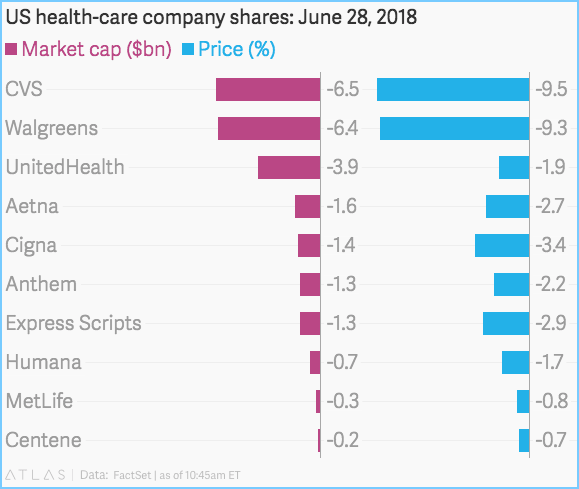🥑#BustedTech: Munchery Filed for Bankruptcy.🥑
Short VC-Backed Hyper-Growth
We've previously discussed the process of an assignment for the benefit of creditors and posited that, as the private markets increasingly become the public markets, (later stage) "startups" will be more likely to file for chapter 11 than go the ABC route. Our conclusion was based primarily on three factors: (a) a number of these startups would have highly-developed and potentially valuable intellectual property and data, (b) more venture-backed companies have "venture debt" than the market generally recognizes, and (iii) parties involved, whether that's the lenders or the VCs, would want releases with respect to any failure and subsequent chapter 11 bankruptcy filing. Given continuing low — and as of this week, lower — yields and a system awash in capital looking for alternative sources of yield (read: venture capital), there's been a dearth of high profile startup failures of late. And, so, technically, we've been wrong.
Yet, on February 28th, Munchery Inc. filed for bankruptcy in the Northern District of California (we previously noted the failure here and again here in a broader discussion of what we dubbed, “The Toys R Us Effect”). Munchery was a once-high-flying "tech" company founded in 2011 with the intent of providing freshly prepared meals to consumers. It made and fulfilled orders placed on its own app and also had a meal kit subcription business where customers received weekly kits with recipes and ingredients. Its greatest creation, however, might be its shockingly self-aware first day declaration — a piece of work that functions as a crash course for entrepreneurs on the evolution and subsequent trials and tribulations of a failing startup.
Interestingly, the meal kit business wasn't part of the original business model. This represented the quintessential startup pivot: originally, the company's model was predicated upon co-cooking (another trend we've previously discussed) where professional chefs would leverage Munchery's kitchens (and, presumably, larger scale) to sell their products directly through Munchery's website and mobile apps. Of late, the co-cooking concept — despite some recent notable failures — has continued to gain traction. Apparently, former Uber CEO, Travis Kalanick, is very active in this space (see CloudKitchens).
At the time, "food delivery was in its early stages." But local restaurant delivery has exploded ever since: Grub Hub, Seamless, Door Dash, Postmates, Caviar, and Uber Eats are all over this space now. Similarly, in the meal kit space, Blue Apron inc. ($APRN), Plated, Hello Fresh and SunBasket are just four of seemingly gazillions of meal kit services that time-compressed workaholics or parents can order to save time.
As you can probably imagine, any company worth anything — especially after nearly a decade of operation and tens of millions of venture funding — will have some interesting proprietary technology. Here's the company's description of its tech (apologies in advance for length but it marks the crux of the bankruptcy filing):
"The team’s early focus was to develop a proprietary technology platform to operate and optimize the entire process of making and delivering fresh food to customers. The technology developed and deployed by the company included: a front-end ecommerce platform, which allowed the company to post items daily and consumers to select, purchase and pay for meals through the company’s website and native apps; the production enterprise resource management (“ERP”) system, which enabled the company to develop and launch new recipes, manage the supply chain for fresh ingredients and supplies, produce the meals through batch cooking, and plate individual meals; the logistics and last-mile platform, which enabled the company to accurately and quickly pack-and-pack individual items and assemble orders using modified hand scanners, distribute orders via a hub-and-spoke system where refrigerated trucks would transport orders to specific zones and hand-off the orders to the assigned drivers; and, a driver app that assisted in managing and routing orders to arrive in the windows specified by customers. All of this was managed through a set of proprietary tracking and administrative tools used by the teams to monitor and mitigate operational issues—and connected to a customer relationship management platform. The team later developed algorithms to optimize the various aspects of the service to scale operations, increase efficiency, and improve the quality of the service. In addition, the company developed over three thousand meal recipes, including descriptions, nutritional information, and photographs. Over the life of the business, the company invested significantly in its technology capabilities, believing that the company’s ability to efficiently scale its operations leveraging technology would be a competitive advantage in the food delivery market."
All of that tech obviously required capital to develop. The company raised $120.7mm in three preferred equity financing rounds between 2013 and 2015. Investors included Menlo Ventures, Sherpa Capital, and E-Ventures. The company also had $11.8mm in venture debt ($8.4mm Comerica Bank and $3.4mm from TriplePoint Venture Growth BDC Corp.).
The bankruptcy filing illustrates what happens when investors (the board) lose faith in founders and insist upon rejiggering the business to be operationally focused. First, they bring in a new operator and relegate the founders to other positions. With new management as cover, they then cut costs. Here, the new CEO's "first action" was to RIF 30 people from company HQ. Founders generally don't like to lose control and then see friends blown out, and so here, both founders resigned shortly after the RIF. This, in turn, gives the investors more latitude to bring in skilled operators which is precisely what they did.
—————————————————————————————————————————————————————————————————————————
TO CONTINUE READING THIS POST, JOIN OUR GROWING PREMIUM SUBSCRIBER BASE HERE.




